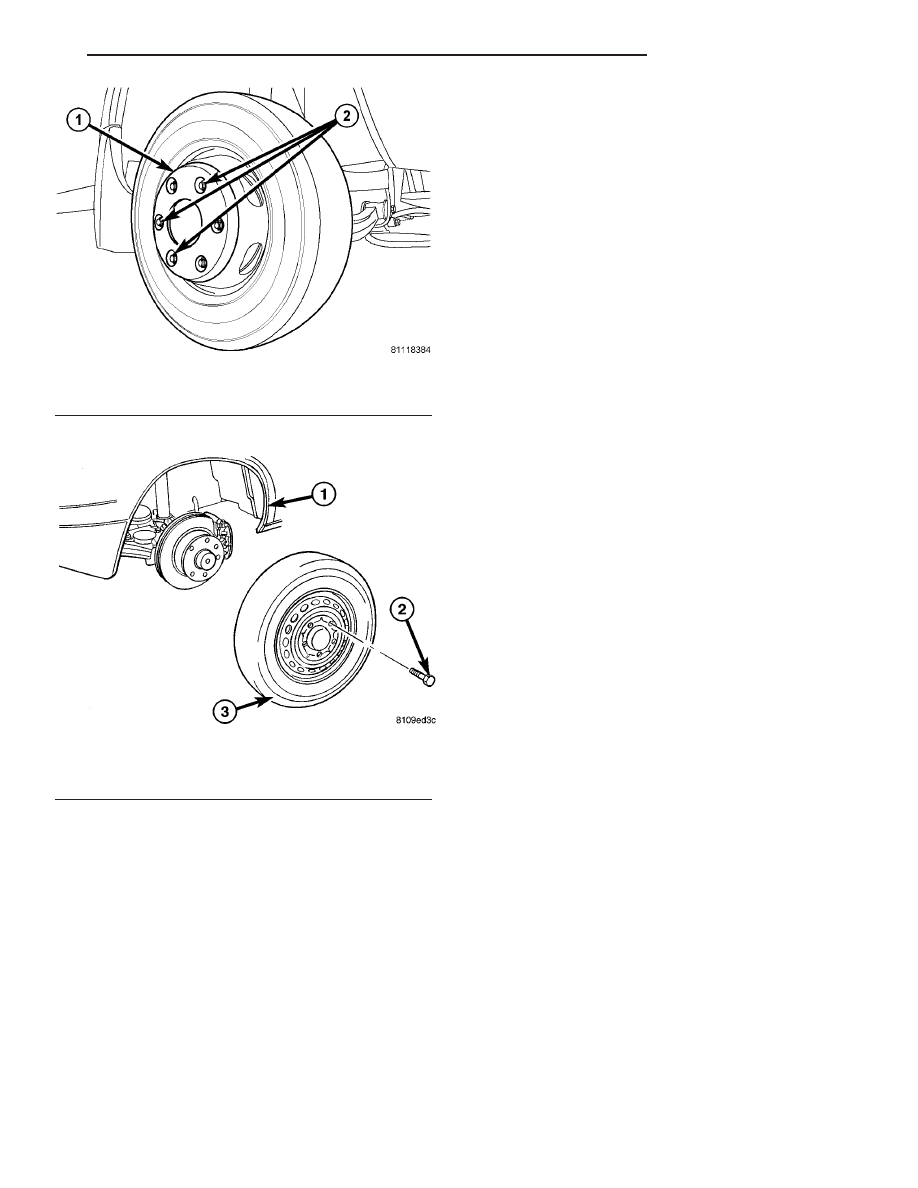Mercedes-Benz Sprinter / Dodge Sprinter. Manual - part 476

(4) Remove the wheel and tire assembly.
INSTALLATION
(1) Install the wheel and tire assembly to the vehi-
cle.
(2) Install the wheel lug studs (SRW) (Fig. 24) and
tighten
to
specification
(Refer
to
22
-
TIRES/
WHEELS - SPECIFICATIONS) See specification
table for model variations.
(3) Install the hub cap to the wheel then install
snugly the lug nuts to hold the hub cap to the wheel
(DRW) (Fig. 23).
(4) Install the wheel lug nuts (DRW) and tighten
to specification (Refer to 22 - TIRES/WHEELS -
SPECIFICATIONS) See specification table for model
variations.
(5) Lower the vehicle.
Fig. 23 FRONT TIRE (DRW)
1 - HUB CAP
2 - LUG NUT WITH HUB CAP HOLD DOWNS
Fig. 24 WHEEL REMOVAL / INSTALLATION
1 - VEHICLE
2 - LUG/STUD
3 - TIRE & WHEEL ASSEMBLY
VA
TIRES/WHEELS
22 - 15